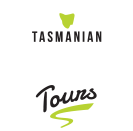Tour our island full of adventure
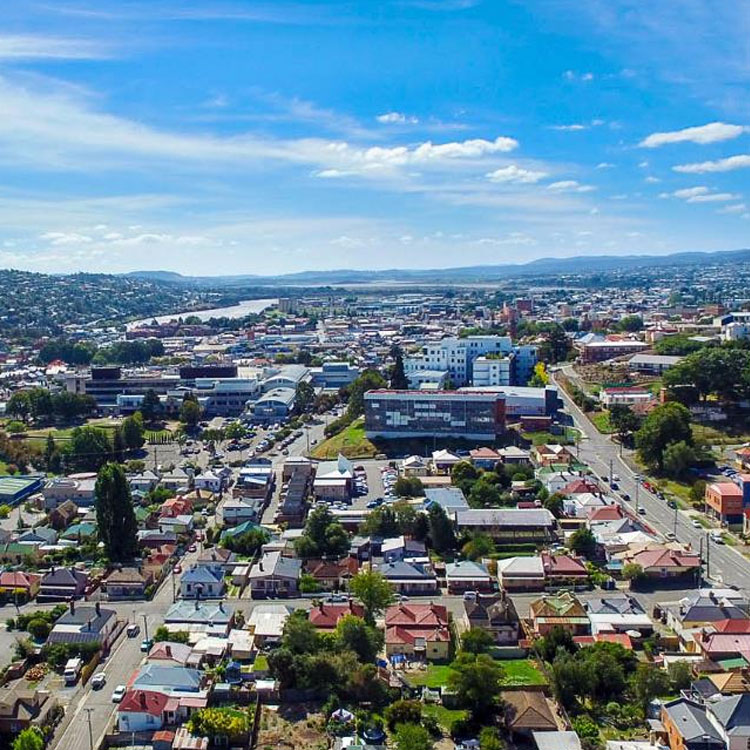
Launceston
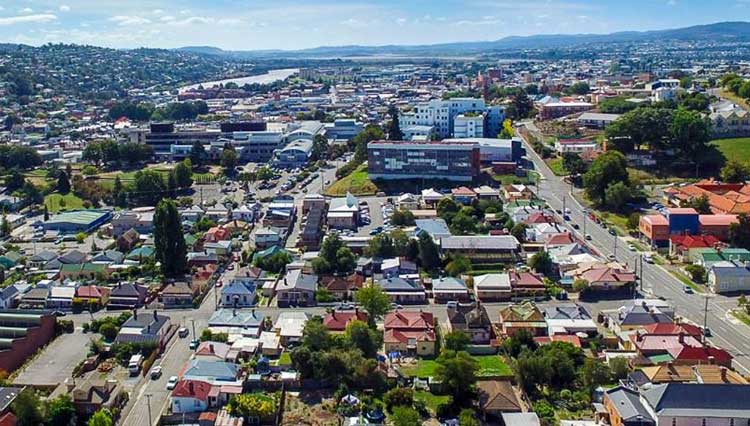
Launceston is Tasmania’s second major city and a vibrant hub for food and wine, culture and nature. In fact, the whole region is packed with city and country charm, gorgeous old towns, excellent food and wine and beautiful scenic highlights.
One of Australia’s oldest cities, Launceston has one of the best-preserved early cityscapes in Australia with its elegant Colonial and Victorian architecture and century-old parks.
Just a short walk from the city centre, Cataract Gorge is a slice of wilderness right in the heart of town and Launceston’s star natural attraction.
There’s also plenty of culture on offer at art galleries, museums and design studios. The Queen Victoria Museum and Art Gallery is the largest regional gallery in Australia.
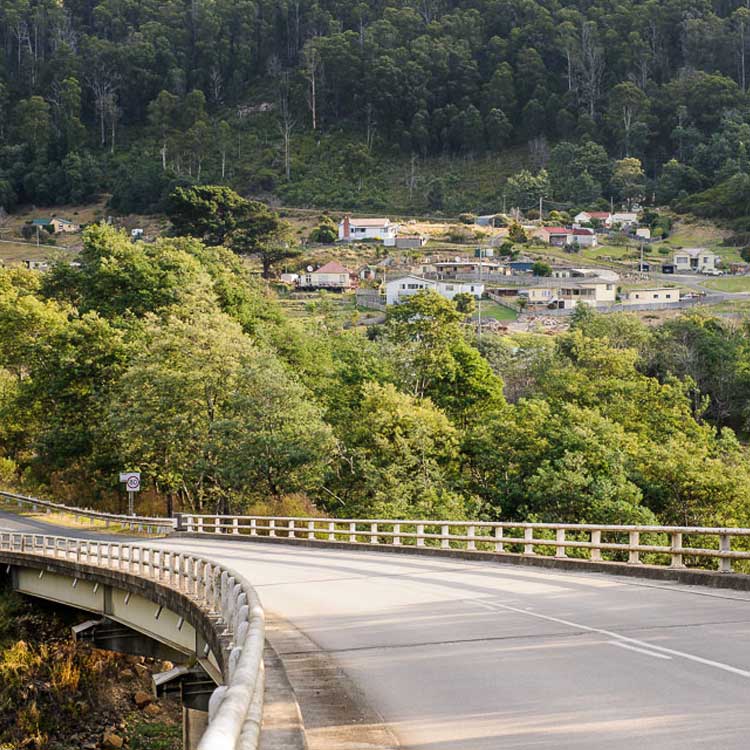
Derby
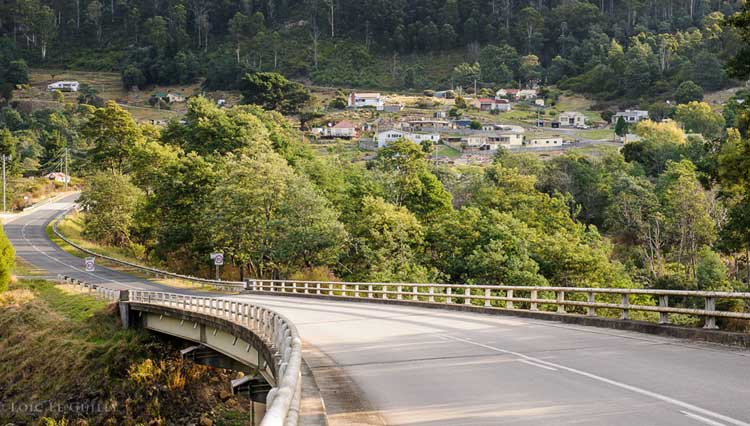
1 hours from Launceston
The tiny riverside village of Derby is a quaint surprise on the winding country drive from Launceston to the East Coast.
Overlooking the Ringarooma River in a landscape of mountains and rainforest, Derby is a classified historic town that’s small on scale but big on stories.
Once a booming mining settlement, known as Brother’s Home, Derby was the setting for an epic tin rush that saw thousands of eager miners flock to the area.
Close by is Little Blue Lake. Once a mine hole, the lake now reflects a stunning aqua blue from the minerals at the bottom of the lake.
Gem hunters should keep their eyes peeled for smokey quartz, topaz and amethyst too.
In town, there are antique, second-hand and craft shops to explore and traditional Devonshire teas for a morning or afternoon treat.
And for the more adventurous there’s a nearby world-class mountain biking trail network with trails starting from within the town itself.
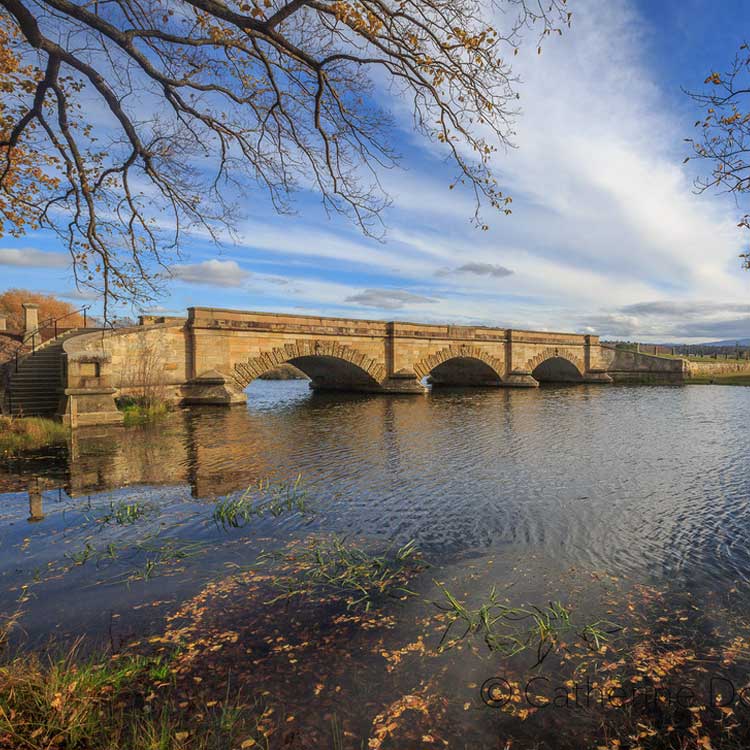
Ross
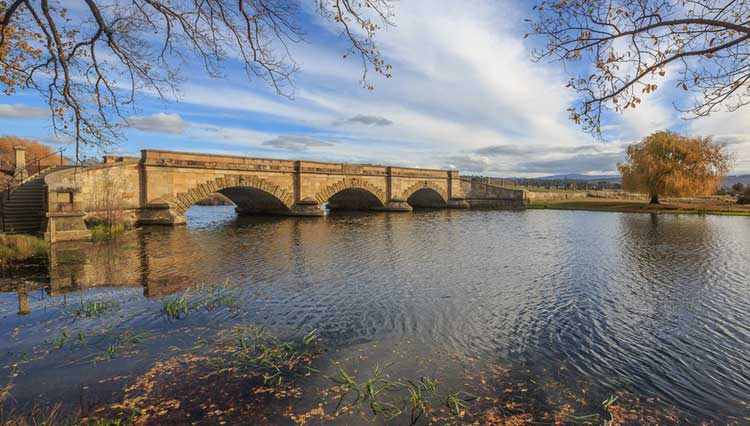
1 hour from Launceston
The pretty riverside village of Ross was built by convict labour in the early 1800s and has been so well preserved that visitors can still enjoy a genuine piece of history today.
Ross is arguably the finest nineteenth century village in Australia. Cobble-style paths and grand old elm trees line the main street, while the Ross Bridge, Australia’s third oldest bridge still standing, is possibly the most beautiful of its kind left in the world.
The detail of its 186 carvings by convict stonemasons was deemed of such high quality that it won the men a free pardon.
The former Ross Female Factory also shares a fascinating chapter in the Ross story, creatively interpreting the experiences of convict women in the early days of Tasmanian settlement. (There’s another female factory in Hobart.)
The main crossroads in Ross are amusingly said to represent “Temptation” (Man O’Ross Hotel), “Recreation” (Town Hall), “Salvation” (Catholic Church) and “Damnation” (the former jail, now a private residence).
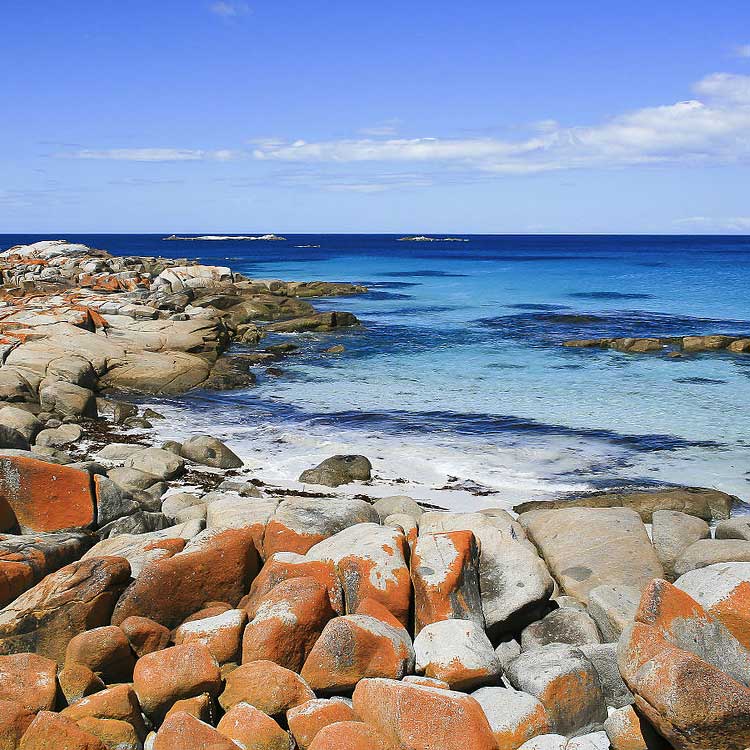
Binalong Bay – Bay of Fires
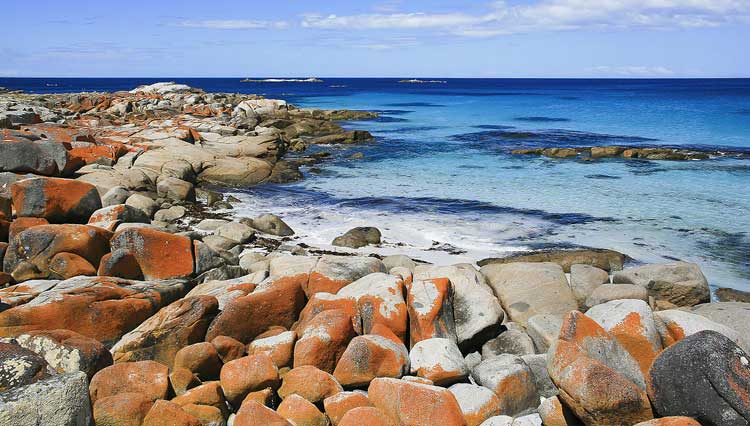
2 hours 20 minutes from Launceston
The town of Binalong Bay is situated at the southern end of the beautiful Bay of Fires. The area is one of the most scenic and beautiful places in Tasmania, from the blue sea and fine white sand to the orange-tinged boulders that hug the coast.
The small beachside community boasts a beautiful stretch of clean white sand and clear water that has been luring holiday makers for decades. With so much natural beauty, it’s no wonder that Lonely Planet named the Bay of Fires one of the world’s hottest travel destinations.
Located north of St Helens, this picturesque part of Tassie makes up the Bay of Fires Conservation Area – a protected coastal stretch from the seaside village of Binalong Bay in the south to Eddystone Point in the north. Its name refers to the Aboriginal fires seen along the coastline by Captain Tobias Furneaux when he sailed past in 1773.
The coastal landscape features rocky gullies, small secluded beaches, shore-hugging forests and the orange lichen-coloured boulders that many now associate with the name.
Binalong Bay and the Bay of Fires offer all kinds of outdoor activities, from scenic coastal walks and beachside fun to some of the world’s best game fishing.
Fascinating sea life can be seen on local guided tours, revealing panoramic views of the coastline and a diverse range of sea life including whales, seals, shearwaters and sea eagles.
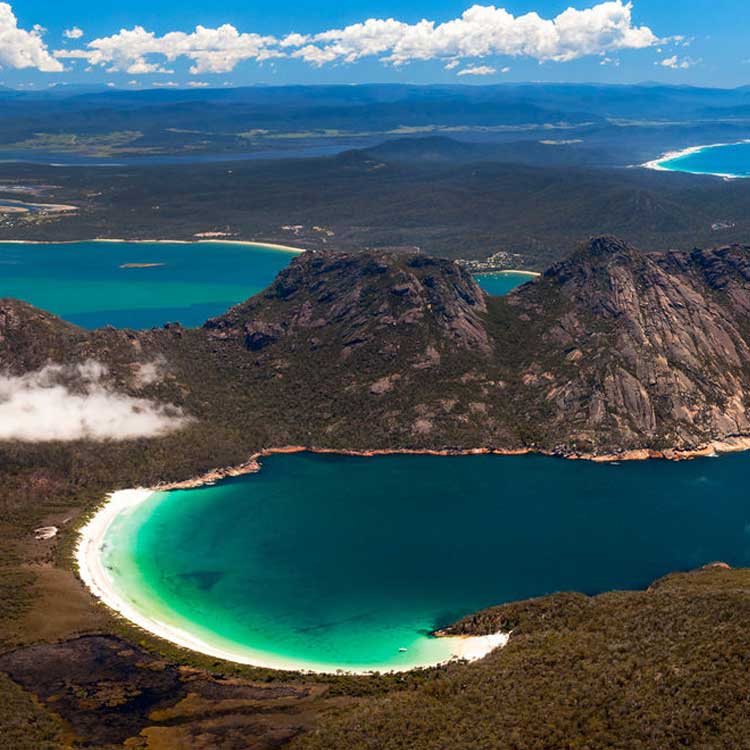
Coles Bay – Wineglass Bay
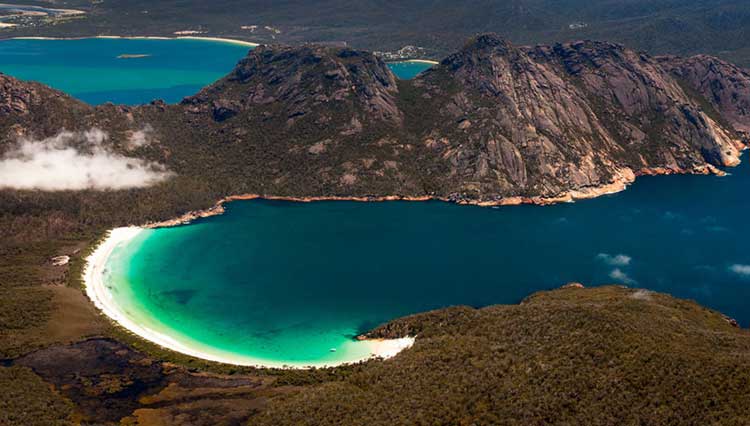
2 hours from Launceston
The seaside holiday village of Coles Bay sits beneath stunning, sheer pink granite mountains overlooking the calm, crystal clear water of Oyster Bay. The uncrowded beaches and crystal clear waters offer the ideal location for swimming, boating, kayaking and fishing.
This pretty town is a great base to explore Freycinet National Park with its spectacular coastal scenery that includes famous Wineglass Bay, rated as one of the ten best beaches in the world.
Take an award-winning sea kayak tour or cruise the Peninsula by air, under sail, on an eco-cruise – or for those staying on land – by Quad bike. For a more gentle option join a food and wine tour and indulge in world class wines and Tasmania’s famous gourmet products.
The 10,000 ha park is a wildlife haven, home to Tasmanian pademelons, white-breasted sea eagles, red-necked wallabies – and in season offers spectacular displays of a wide variety of native orchids.
There’s also a range of walks in the park. These include an easy ten minute walk to the beach and rocks around Sleepy Bay, on route to Cape Tourville. The walk down to the rocks is easy and enjoyable and the kelp on the rocks is impressive.
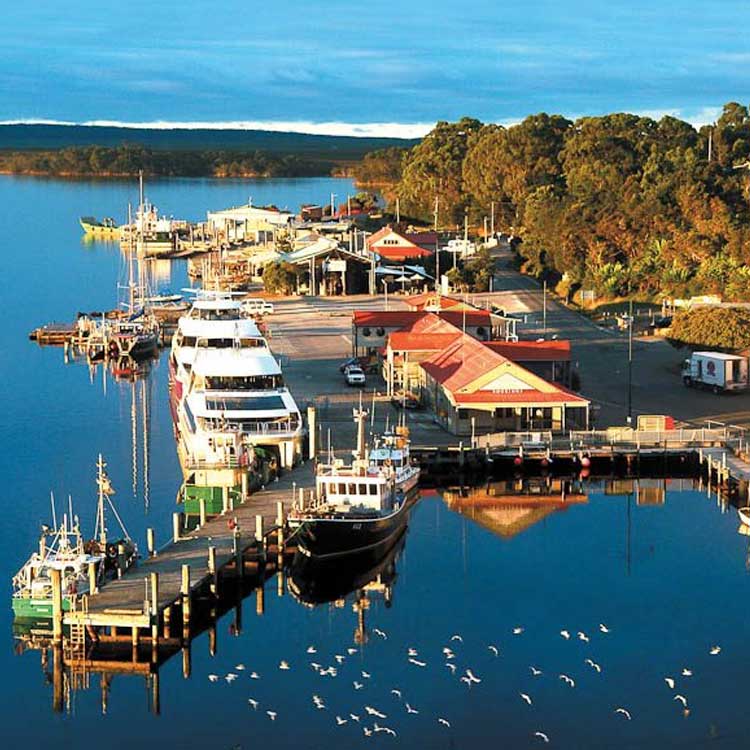
Strahan
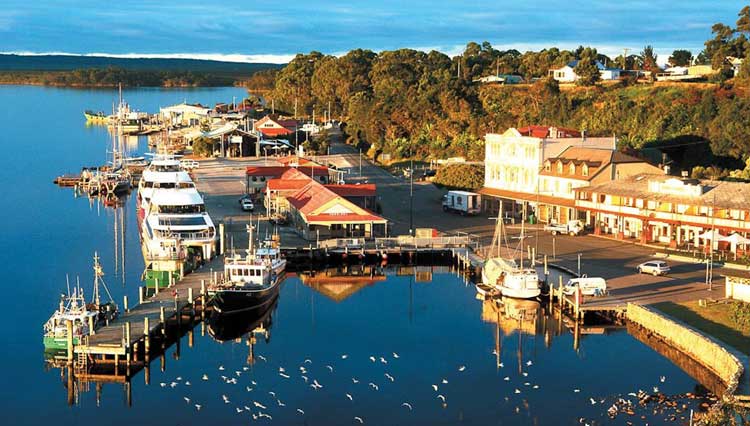
3 hours 40 minutes from Launceston
Strahan is a harbour-side village with a dark and fascinating convict past set on the edge of the Tasmanian Wilderness World Heritage Area.
Nestled on the shores of massive Macquarie Harbour, Strahan is the gateway to the World Heritage listed Franklin-Gordon Wild Rivers National Park.
Boat cruises provide an unforgettable journey through World Heritage Wilderness into the pristine temperate rainforests of the Gordon River.
Strahan is full of stories from the days of convicts and pioneers toughing it out in Tassie’s wild west. Nearby, in Macquarie Harbour is Sarah Island, once a notorious convict prison and a powerful reminder of the brutal treatment of Tasmania’s convicts.
These days, Strahan is an iconic travel destination with shops selling artisan wares and eateries serving up delicious local produce.
There are long stretches of wild ocean beach to explore, massive sand dunes to conquer and forest adventures to be had.
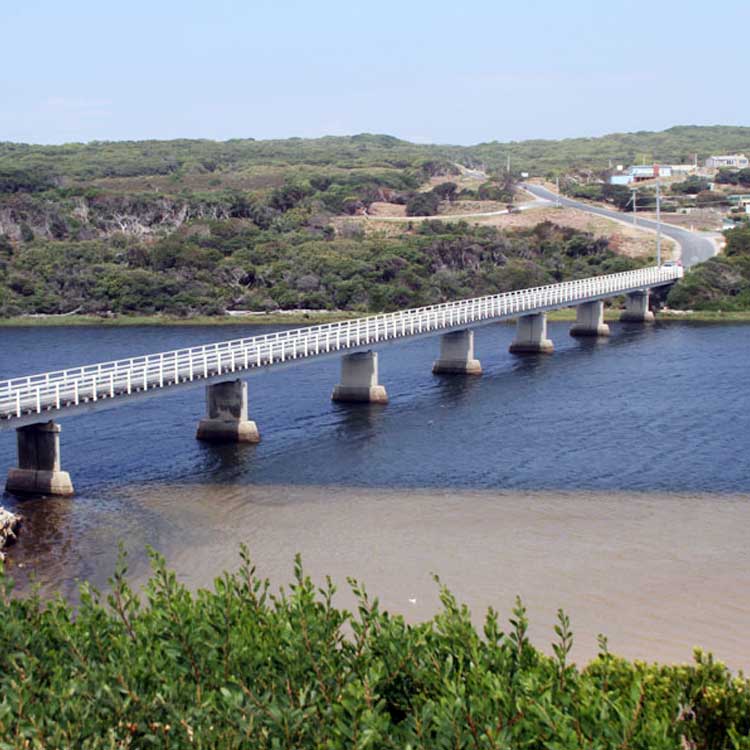
Arthur River
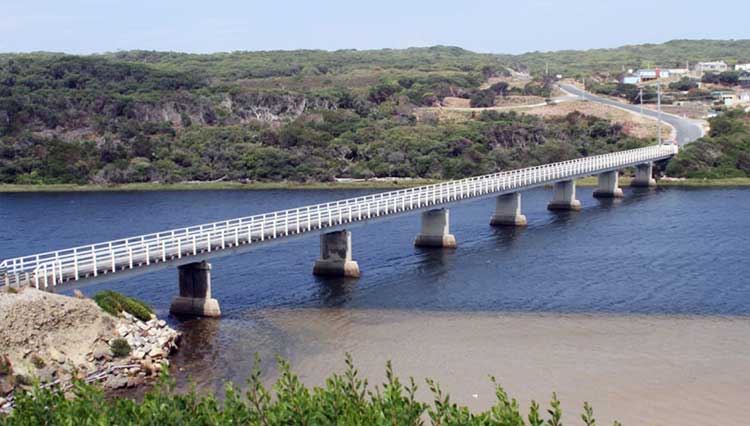
3 hours 25 minutes from Launceston
Surrounded by dense rainforest and named after the wild river that runs from the mountains to the sea, Arthur River is a great base for exploring the Tarkine wilderness, Tasmania’s largest tract of temperate rainforest.
The tiny coastal township of Arthur River is the northern entry to the Western Explorer (roadway) that leads from the coast to the beautiful Tarkine wilderness area.
Take a cruise on the Pieman River through the Arthur-Pieman River Protected Area or hit the coast on a guided beach or bushwalk and look out for white-bellied sea eagles, platypus, orange-bellied parrots, kingfishers and Tasmanian devils along the way.
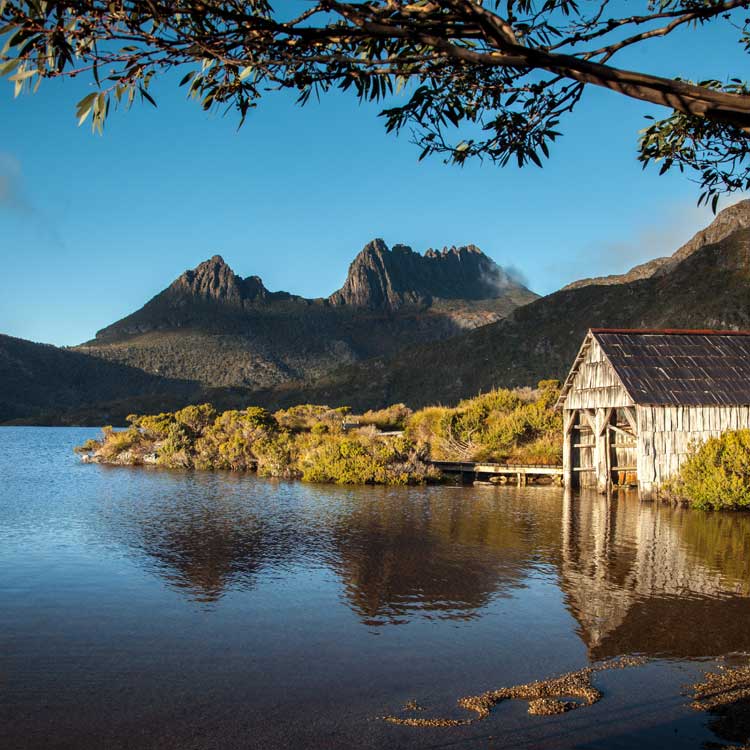
Cradle Mountain
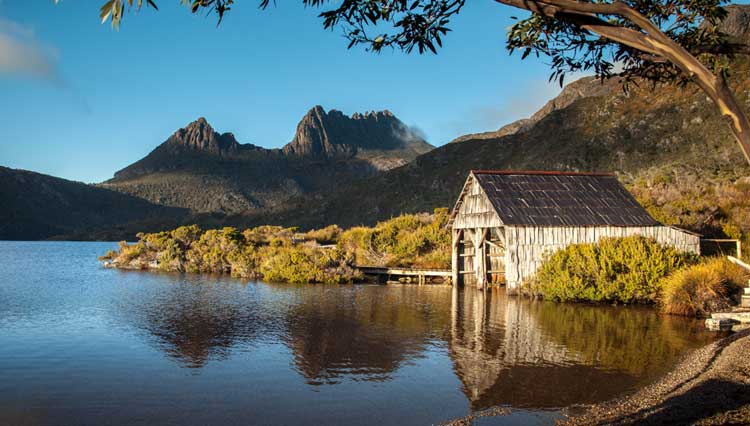
1 hours 40 minutes from Launceston
Located at the northern end of the Cradle Mountain-Lake St Clair National Park, Cradle Mountain is one of Tasmania’s most visited natural attractions.
While there’s no actual town at Cradle Mountain, visitors can find a range of accommodation within the park in cabins, chalets and campgrounds.
Part of the Tasmania World Heritage Wilderness Area, the surrounding landscape is diverse and includes grassland, rainforest and ancient plants such as the long-lived King Billy pine and the native ‘fagus’ or deciduous beech.
The park also provides a rich habitat for wildlife, including Tasmanian devils, quolls, platypus, echidna and several bird species.
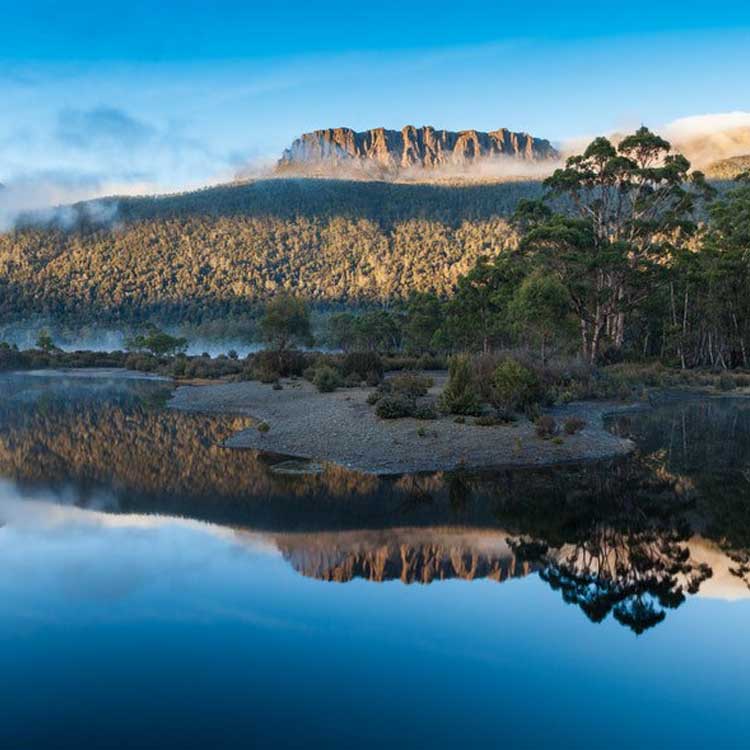
Derwent Bridge
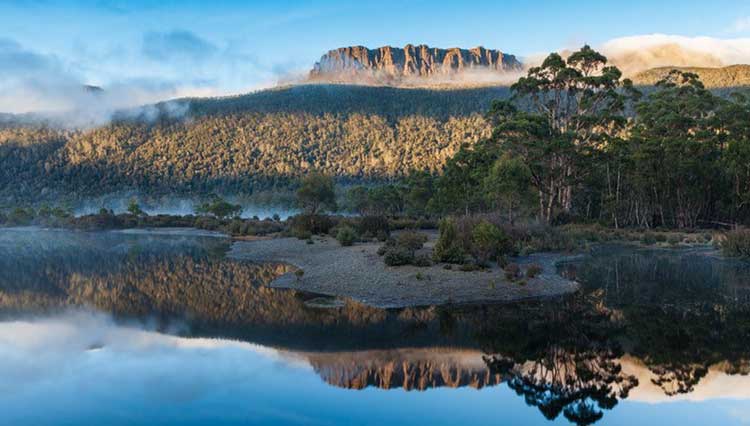
2 hours 25 minutes from Launceston
Derwent Bridge is the gateway to the southern end of the wilderness and wildlife of the Cradle Mountain-Lake St Clair National Park.
Named after its crossing at the source of the mighty Derwent River, it’s just 5 km from Lake St Clair and some of Tasmania’s most stunning wilderness.
Lake St Clair is Australia’s deepest freshwater lake and can be explored on a scenic cruise with spectacular views of the mountain peaks surrounding the lake.
Also nearby is Lake King William where you’ll find good trout fishing.
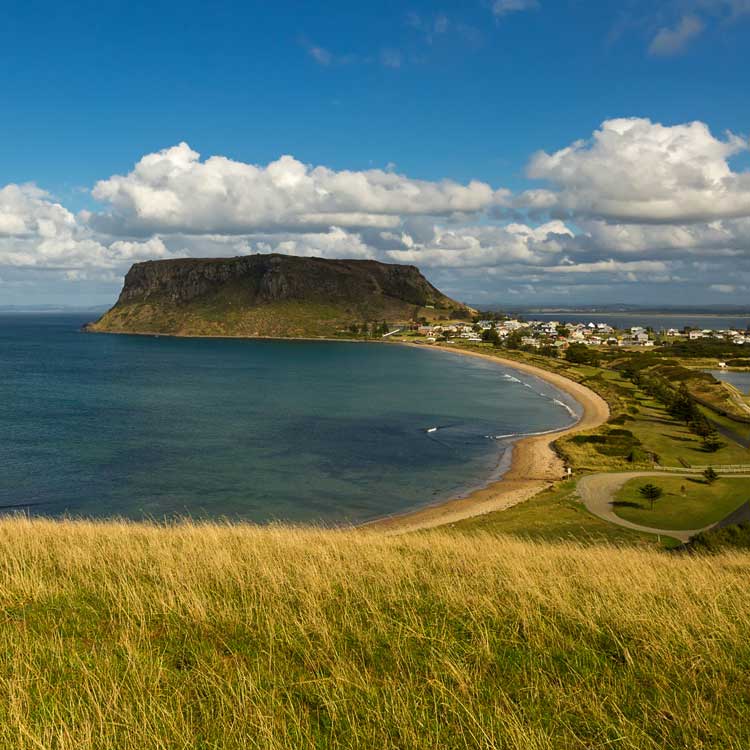
Stanley
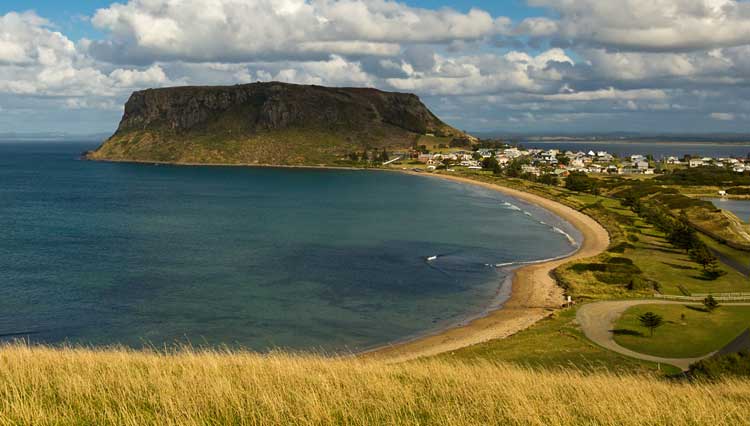
2 hours 40 minutes from Launceston
Stanley is a town of perfectly preserved colonial buildings, genteel cafes and quality B&B cottages, all sheltering in the imposing shadow of the Nut, an immense flat topped, volcanic plug rising 150 metres straight up from the water’s edge.
It’s also close to some great nature experiences and Tasmania’s Tarkine wilderness.
After enjoying Stanley’s famous fish and chips, climb the winding path to the top of The Nut for a spectacular 360-degree view and an aerobic workout, Stanley-style.
For a less strenuous trip, take the open chairlift ride and look out for seals basking in the sun and at night, the local penguins can be seen coming in to nest.
Stanley has plenty of fascinating stories, too. You can take a history tour through Stanley’s streets, lined with quaint stone cottages dating back to the town’s early days when it hosted the headquarters of the Van Diemen’s Land Company or visit Highfield Historic Site, home and farm of the chief agent of the Van Dieman’s Land Company, on a ghost tour at night, or wait for the safety of daylight to learn how the area’s first European settlers lived.
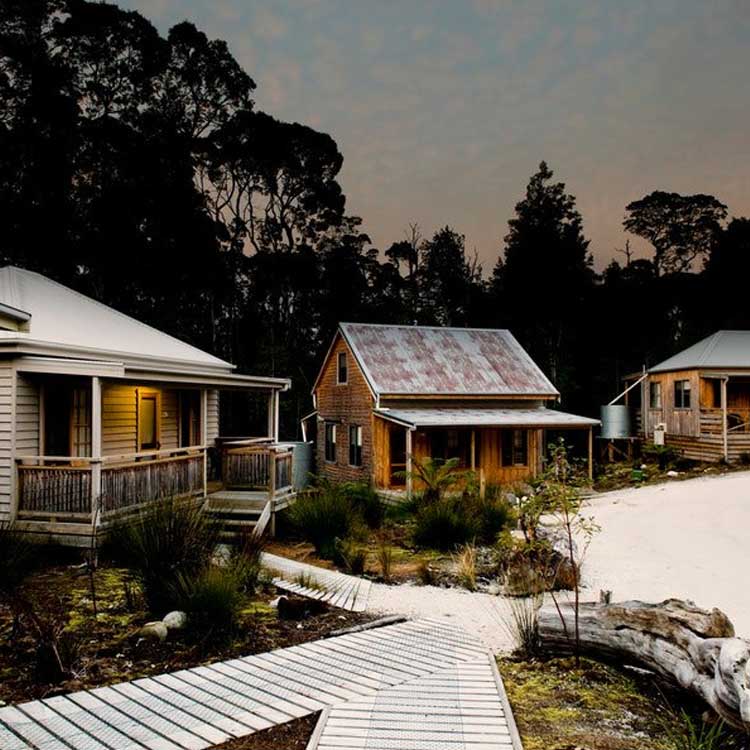
Corinna
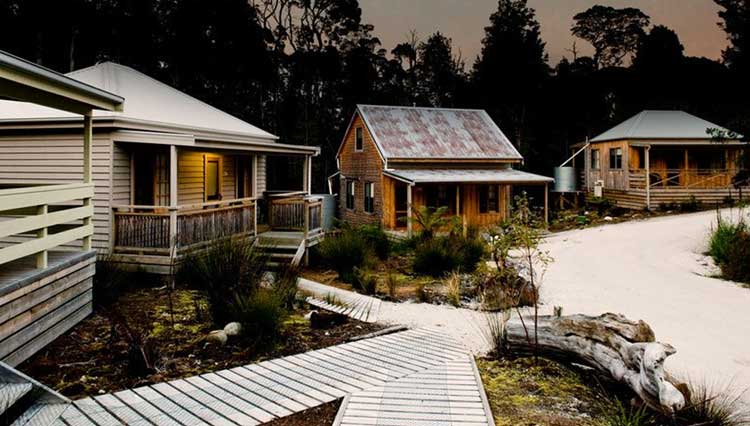
3 hours 40 minutes from Launceston
Corinna is a remote historic mining town, now an eco-tourism haven set in pristine rainforest surrounded by stunning wilderness and great nature experiences.
This tiny ‘settlement’ sits at the southern end of the Tarkine wilderness area and is set amongst rainforest on the banks of the majestic Pieman River. Here, nature is the star and the old-growth rainforest is a living link with the ancient supercontinent Gondwana.
There are some iconic walks, from the accessible Huon Pine Walk to the more challenging Savage River, Whyte River and Mount Donaldson walks. These offer magnificent wilderness views.
Back at ground level, a river cruise aboard an historic Huon pine riverboat or kayaking journey reveal breathtaking rainforest reflected in the crystal clear waters. This is also a top spot for boating, fishing and bird watching.
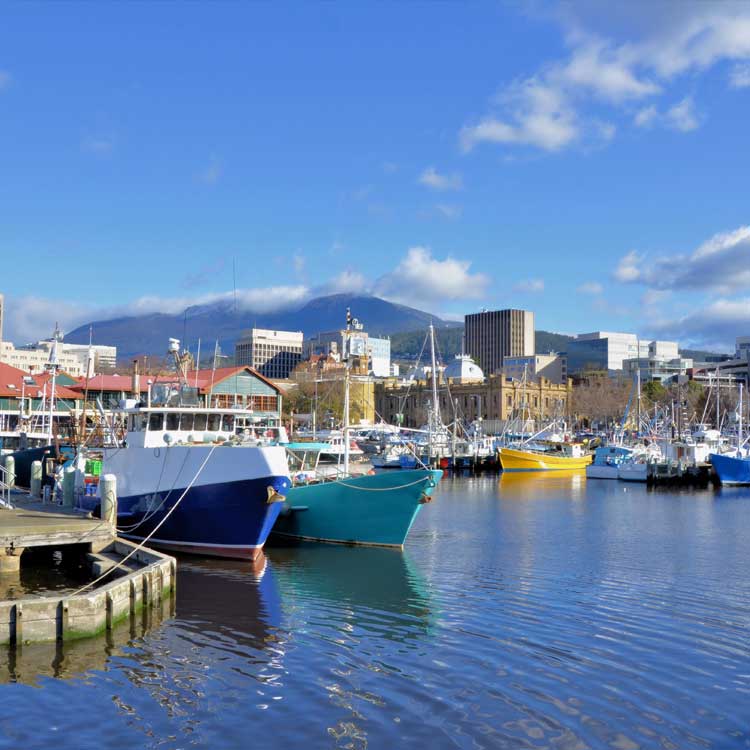
Hobart
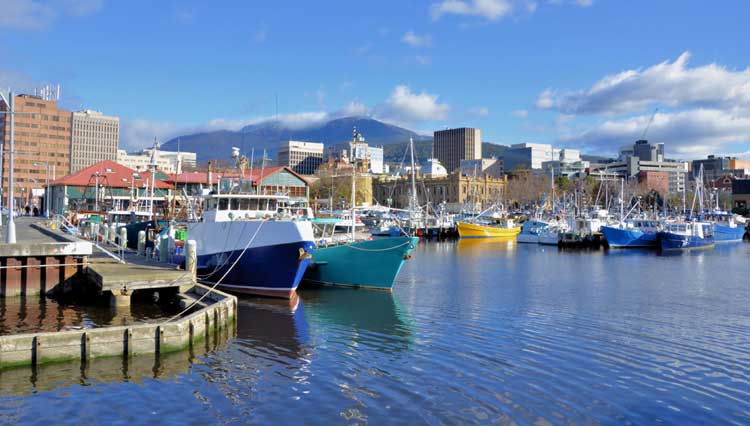
2 hours 25 minutes from Launceston
Hobart offers a contrasting blend of heritage, scenery and culture, with world class activities and attractions nearby. Nestled amongst the foothills of Mt Wellington, Hobart combines heritage charm with a modern lifestyle in a setting of exceptional beauty. It’s no wonder Lonely Planet has called Hobart one of the top ten spots to visit in the world right now.
Hobart is Tasmania’s capital city and the second oldest capital in Australia, after Sydney. Located at the entrance to the Derwent River, its well-preserved surrounding bushland reaches close to the city centre and beaches line the shores of the river and estuary beyond.
With its captivating history, picturesque waterways, rugged mountains and gourmet experiences, the city has something for everyone.
Award-winning restaurants offer fine dining experiences using the best Tasmanian produce recognised by the world’s best chefs, while on the waterfront punts and fishmongers sell the freshest seafood straight from the Southern Ocean.
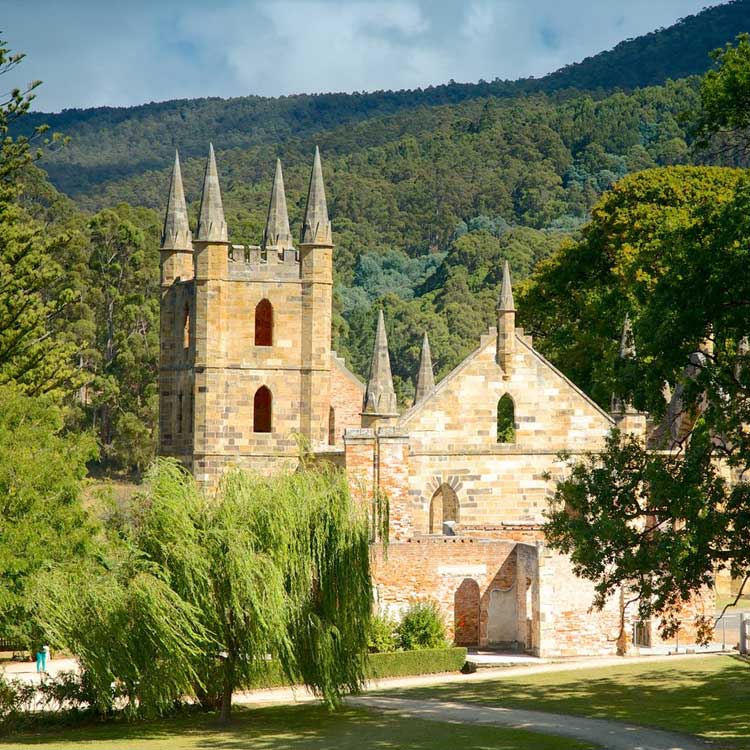
Port Arthur
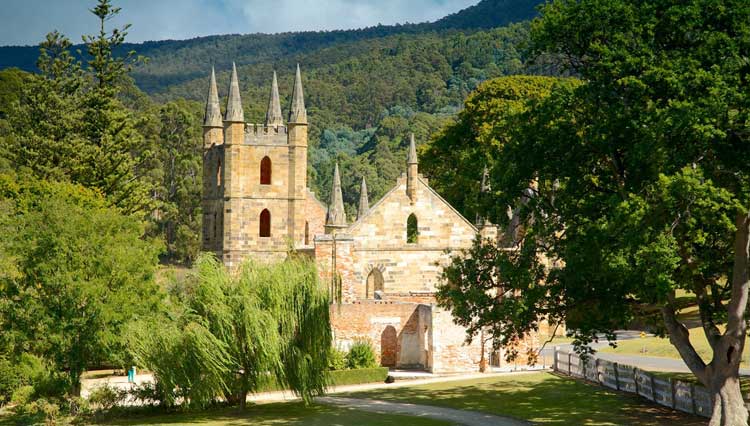
3 hours 20 minutes from Launceston
Port Arthur is a quaint village best known for the well-preserved penal colony buildings of the nearby Port Arthur Historic Site.
Set on the tip of the Tasman Peninsula, Port Arthur is a great base to explore the historic site and the area’s natural attractions including dramatic coastal rock formations and towering cliffs.
The Port Arthur Historic Site was established in 1830 as a timber station and was soon built into a small town to house and punish over a thousand of Tasmania’s most notorious convicts. This dark history contrasts with the beauty of the surrounding area. Full of powerful stories of hardship and loss, it’s one of Tasmania’s most rewarding travel experiences.
You can find more early Australian convict history at the World Heritage-listed Coal Mines Historic Site, 20 km north-west of Port Arthur, where the site reveals the harsh lives of repeat offender convicts who worked underground extracting coal.
Nature also looms large with unique rock formations such as Remarkable Cave and beautiful waterways like Crescent Bay, a secluded curve of striking beauty backed by massive sand dunes.
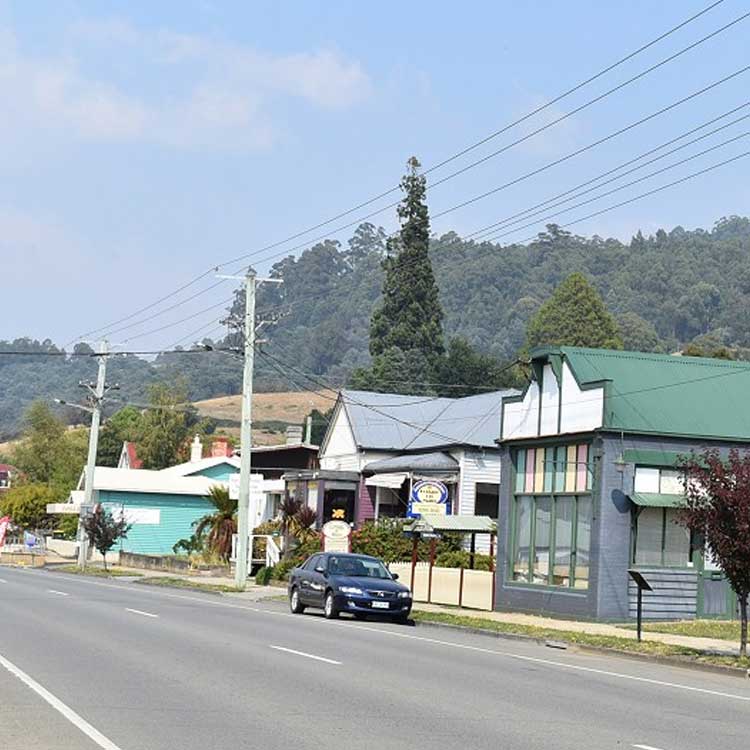
Franklin
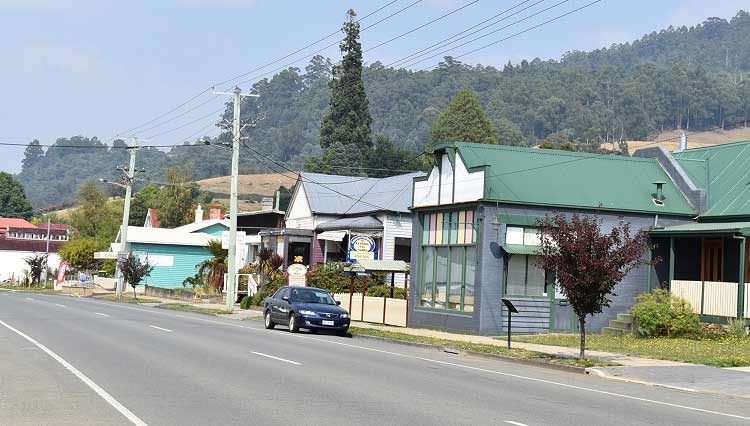
3 hours 10 minutes from Launceston
The riverside township of Franklin has lots of old-fashioned Tasmanian charm, from the quaint historic buildings and streetscape to the pretty wooden boats floating on the Huon River.
Located in the ultra-scenic Huon Valley, Franklin is the oldest township in the region and sits quietly on the western side of the beautiful Huon River.
Franklin is vibrant and charming, with a real village feel. Quaint old buildings and cottages line the main street, many with front gardens full of flowers and fruit growing on heirloom trees while quiet lanes lead up to the hills behind the town and offer wonderful views of the township and river below.
Franklin serves up a feast of local food and produce with a good selection of eateries including riverfront cafes and restaurants. Roadside fruit stands sell fresh local apples and pears – a reminder of the rich apple-growing heritage of the Huon Valley.
